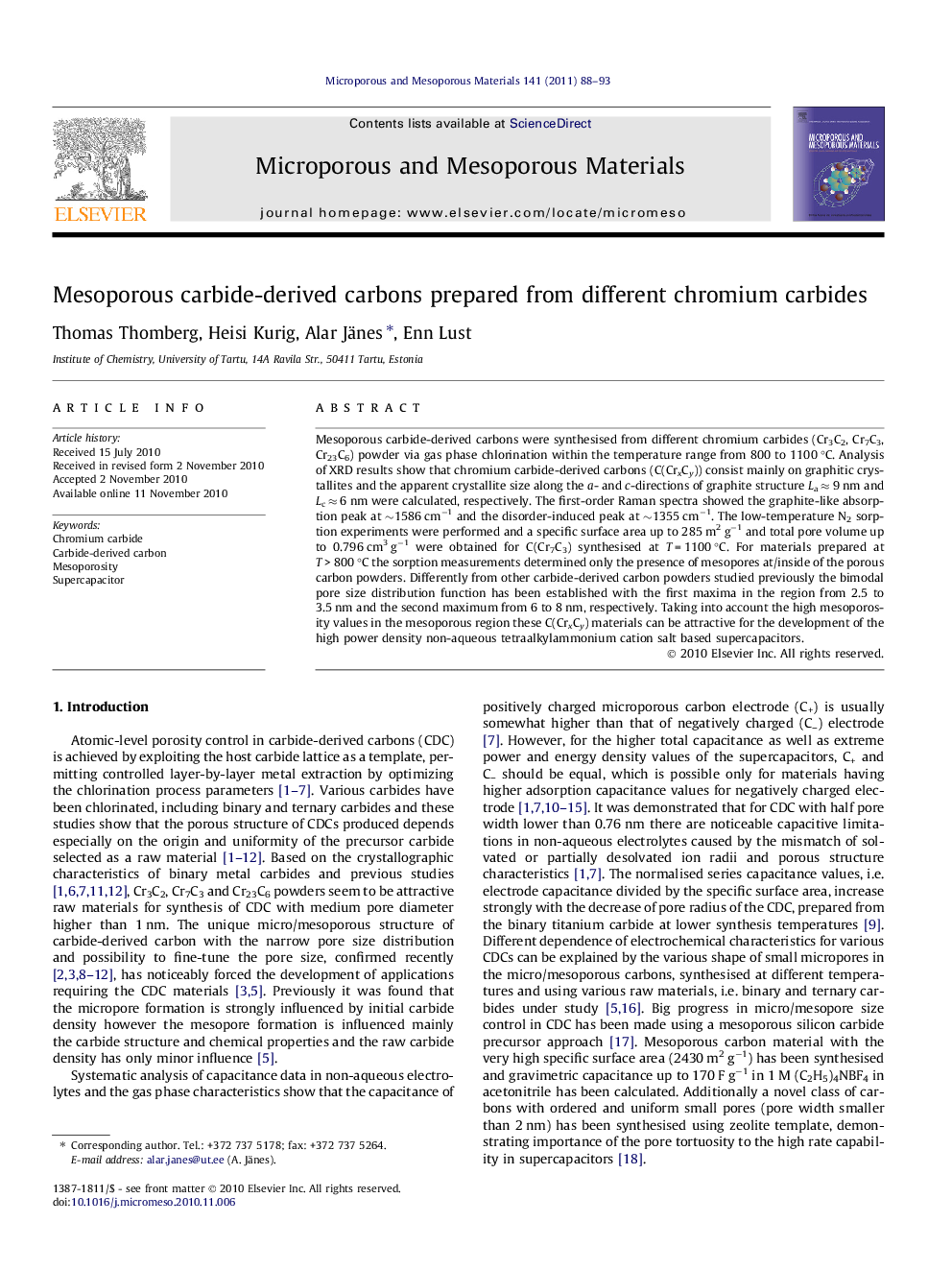| کد مقاله | کد نشریه | سال انتشار | مقاله انگلیسی | نسخه تمام متن |
|---|---|---|---|---|
| 75427 | 49115 | 2011 | 6 صفحه PDF | دانلود رایگان |

Mesoporous carbide-derived carbons were synthesised from different chromium carbides (Cr3C2, Cr7C3, Cr23C6) powder via gas phase chlorination within the temperature range from 800 to 1100 °C. Analysis of XRD results show that chromium carbide-derived carbons (C(CrxCy)) consist mainly on graphitic crystallites and the apparent crystallite size along the a- and c-directions of graphite structure La ≈ 9 nm and Lc ≈ 6 nm were calculated, respectively. The first-order Raman spectra showed the graphite-like absorption peak at ∼1586 cm−1 and the disorder-induced peak at ∼1355 cm−1. The low-temperature N2 sorption experiments were performed and a specific surface area up to 285 m2 g−1 and total pore volume up to 0.796 cm3 g−1 were obtained for C(Cr7C3) synthesised at T = 1100 °C. For materials prepared at T > 800 °C the sorption measurements determined only the presence of mesopores at/inside of the porous carbon powders. Differently from other carbide-derived carbon powders studied previously the bimodal pore size distribution function has been established with the first maxima in the region from 2.5 to 3.5 nm and the second maximum from 6 to 8 nm, respectively. Taking into account the high mesoporosity values in the mesoporous region these C(CrxCy) materials can be attractive for the development of the high power density non-aqueous tetraalkylammonium cation salt based supercapacitors.
Figure optionsDownload as PowerPoint slideResearch highlights
► Mesoporous carbons prepared from Cr3C2, Cr7C3 and Cr23C6 using chlorination method.
► Mesoporosity of carbon depends on the chromium carbide stoichiometry.
► Adsorption isotherm hysteresis depends strongly on the chlorination temperature used.
► Graphitisation starts already at temperatures higher than 900 °C.
► Mesopore volume depends on the synthesis temperature applied.
Journal: Microporous and Mesoporous Materials - Volume 141, Issues 1–3, May 2011, Pages 88–93